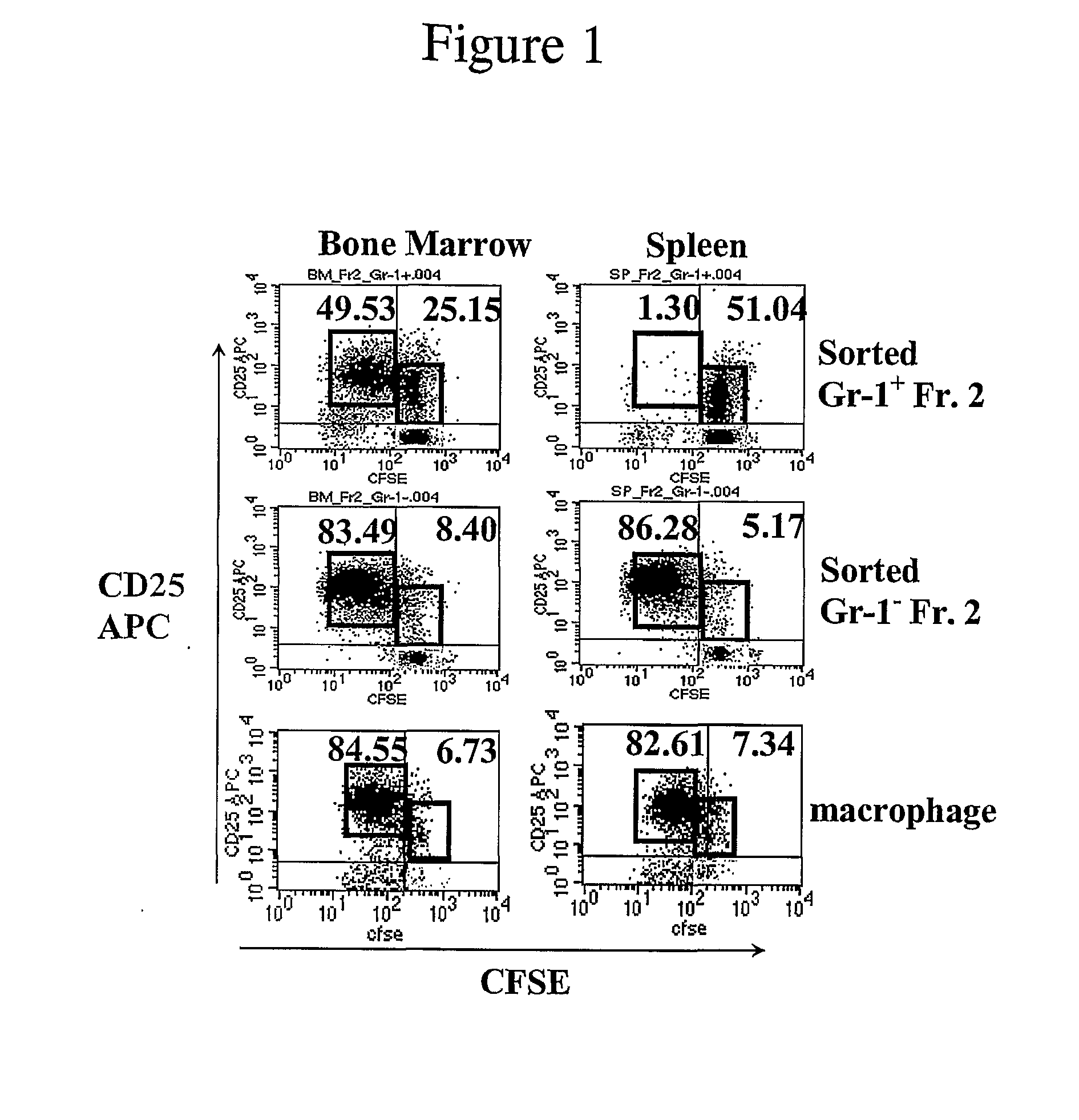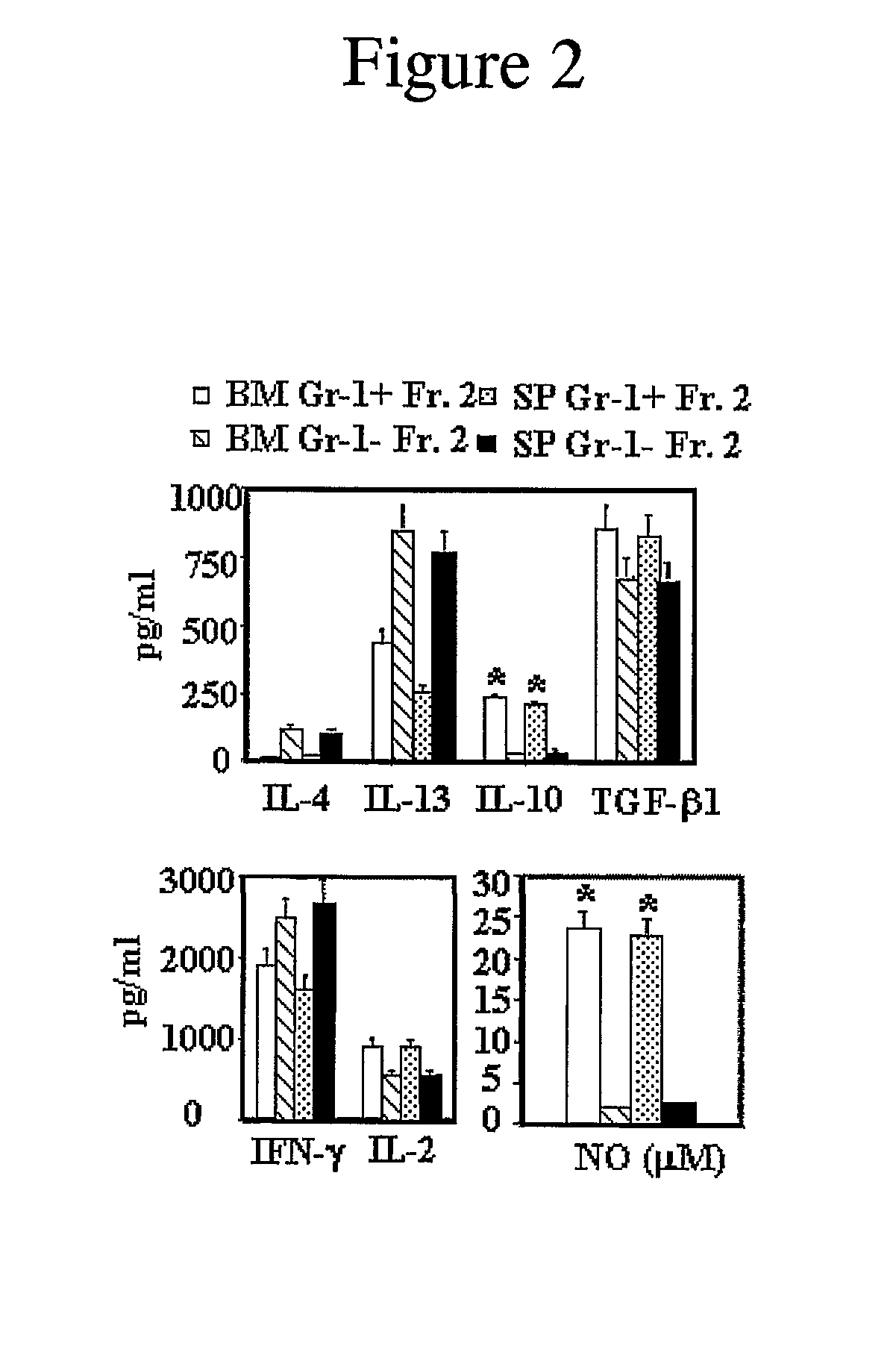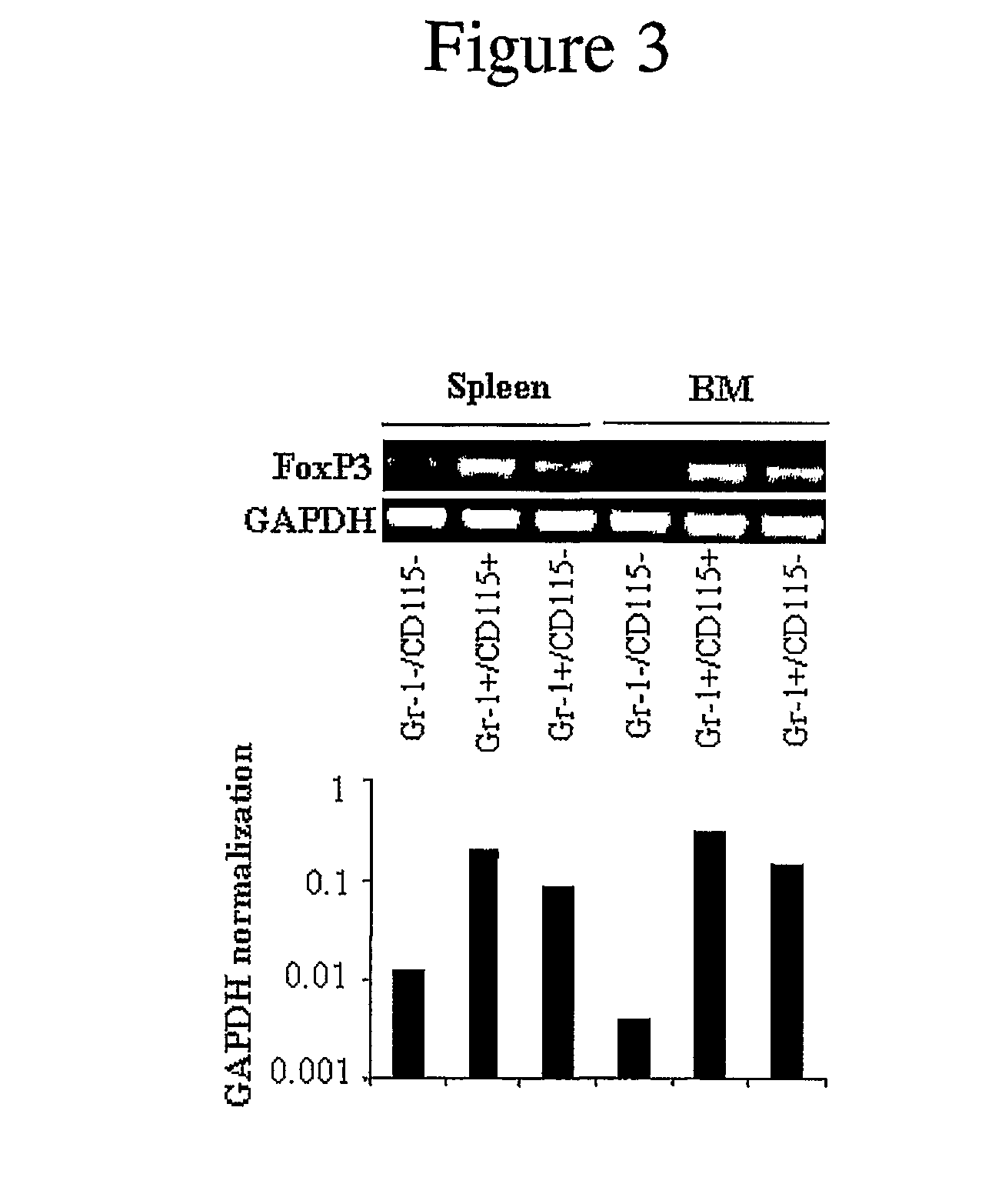Myeloid Suppressor Cells, Methods For Preparing Them, and Methods For Using Them For Treating Autoimmunity
a technology suppressor cells, which is applied in the field of myeloid suppressor cells, can solve the problems of side effects, kidney toxicity, weight gain, and side effects that are associated with the disease,
- Summary
- Abstract
- Description
- Claims
- Application Information
AI Technical Summary
Benefits of technology
Problems solved by technology
Method used
Image
Examples
example 1
Isolation of Myeloid Suppressor Cells from Mice
[0120]Spleens, tibias, and femurs were harvested from mice under sterile conditions. Bone marrow (BM) cells were obtained by flushing the contents of the mouse femora and tibia with cold phosphate buffered saline (PBS) using a syringe and a 26-gauge needle. Spleen cell (SC) suspensions were prepared by teasing the spleen, which includes homogenization with two pieces of frosty cover slides, lysis of RBCs, and then passing the solution through a filter net. Isolated BM and SC were centrifuged for 5 minutes at 200×g and resuspended in complete culture medium (RPMI 1640 medium with 10% fetal calf serum (FCS), 20 mM HEPES buffer, 200 U / ml penicillin, 50 μg / ml streptomycin, 0.05 mM β-mercaptoethanol (2-ME), and 2 mM glutamine (all from Sigma, St. Louis, Mo.)).
[0121]Samples of BM or SC (3-4×106 cells / ml) were placed in 75 cm2 tissue culture flasks (Costar, Cambridge, Mass.) and incubated overnight at 37° C. in 5% CO2. The next day, the nonadh...
example 2
T Cell Anergy and T Regulatory (Treg) Cell Development Mediated by MSCs
Experimental Animals
[0125]10-week-old female congenic Thy-1.1+ BALB / c mice (Kemp et al. J. Immunol. 2004, 173:2923-2927) were a gift from Dr. Richard Dutton, (Trudeau Institute), and C57BL / 6 mice were purchased from National Cancer Institute (Frederick, Md.). Influenza hemagglutinin (HA)-specific I-Ed-restricted CD4 and CD8 TCR-transgenic mice (in BALB / c background, Thy-1.2) were gifts from Dr. Linda Sherman (Scripps Research Inst., La Jolla, Calif.) and Dr. Constantin A. Bona (Mount Sinai School of Medicine, New York, N.Y.), respectively (see Marzo et al. Cancer Res. 1999, 59: 1071-1079; Morgan et al. J. Immunol. 1996, 157:978-983). Stat1 deficient BALB / c mice and IL-10R deficient mice were established as described before (Durbin et al. Cell. 1996, 84:443-450; Spencer et al. J. Exp. Med. 1998, 187:571-578). Mice deficient in inducible nitric oxide synthase (iNOS; in C57BL / 6 background) or IL-4 receptor ax chain ...
example 3
Myeloid Derived Suppressor Cells Mediated Immune Suppression to Prevent Type I Diabetes and Treg Development
Mice
[0149]CD4-HA-TCR-Tg mice (BALB / c, H-2d) expressed the 14.3.d HA-specific TCR, which recognizes the influenza hemagglutinin (HA, 110-120) epitope of A / PR / 8 / 34 influenza virus in association with I-Ed. Ins-HA / RAG− / − mice (B10.D2.H-2d) expressed the HA protein from the same virus in pancreatic β cells under the control of the rat insulin promoter. Mice were housed in pathogen-free conditions and were used according to the guideline of the Institutional Animal Care Committee at Mount Sinai School of Medicine.
Tumor Model
[0150]The MCA26 tumor cell line is a BALB / c-derived, chemically induced colon carcinoma line with low immunogenicity. To generate the tumor model of metastatic colon cancer, MCA26 tumor cells (7×104) were innoculated in the liver by intrahepatic implantation of cells as described previously (Huang et al., 2006. Cancer Res., 66: 1123, which is incorporated by ref...
PUM
| Property | Measurement | Unit |
|---|---|---|
| weights | aaaaa | aaaaa |
| weights | aaaaa | aaaaa |
| tumor weight | aaaaa | aaaaa |
Abstract
Description
Claims
Application Information
 Login to View More
Login to View More - R&D
- Intellectual Property
- Life Sciences
- Materials
- Tech Scout
- Unparalleled Data Quality
- Higher Quality Content
- 60% Fewer Hallucinations
Browse by: Latest US Patents, China's latest patents, Technical Efficacy Thesaurus, Application Domain, Technology Topic, Popular Technical Reports.
© 2025 PatSnap. All rights reserved.Legal|Privacy policy|Modern Slavery Act Transparency Statement|Sitemap|About US| Contact US: help@patsnap.com



